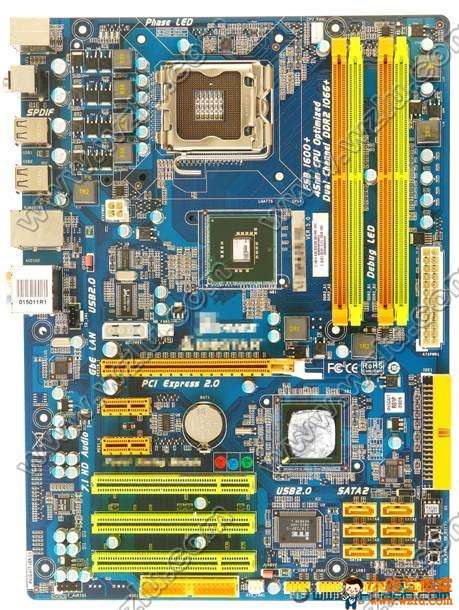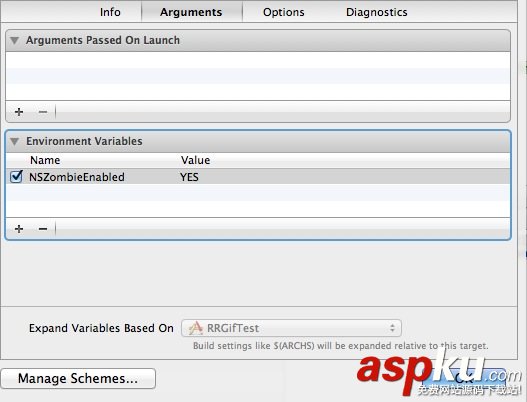引入SQLite
sqlite是纯C实现的,所以注定了它是一个跨平台利器,在Android与IOS下均能使用,而且完全可以写出通用的代码,方便我们移植。当然Android和IOS下都有封装过的sqlite给开发者使用,不过这样子一个是不方便移植,另一个是封装后的效率咋样我们也不知道,所以还是原生态的最健康。最后一个重要的原因就是原生的使用也是相当简单。我将在接下来的教程中为您一一讲解。
首先最重要的一点是在工程中导入sqlite,苹果的SDK已经给你包含进来了,所以只要导入一个叫 libsqlite3.0.dylib 的 framework就好了。然后,包含相应的头文件:#import "sqlite3.h" 。
在IOS工程的导入就已经结束了,你可以正常使用了。
在其他工程中,比如android中,嵌入式linux中,我们就需要添加两个文件了 请到 http://sqlite.org/download.html 下载相应的文件,你用哪个平台的就对应下哪个文件,不过我一般下第一个叫做 sqlite-amalgamation-3071000.zip 的文件,这个里面包含了一个 sqlite3.c 与一个 sqlite3.h 。我直接把这两个文件拖到我的工程中去,然后在需要使用的地方把 .h 文件包含进来就好了 。这样比调用编译好的库的好处是我能更方便的调试,我也能对他的功能做一些修改,比如我可以自己在里面添加一套 自己的加密方式,又或者我可以添加几个回调函数来方便与上层交互。或者删掉我们不需要的功能,减少代码冗余。
在我接下来的讲解中,我会用纯C去讲解,虽然我会在苹果的 xcode 环境下去写代码,但是除了库的引用方式不一样以外,其他的都一样,我会尽量避免与平台相关的东西。当然有时候我可能会写一个有UI的Demo,这时候就无可避免地要与平台打交道了,不过这个教程的关键点在于弄懂底层的原理,学会sqlite的API的调用,根据自己的需求封装以及提供接口。
最后附上xcode 中导入sqlite的图:

单击那个加号。然后搜索sqlite3 ,选取 sqlite3.0.dylib, 然后 单击Add。然后你就看到工程中这个库导进来了。


然后在需要调用的地方导入头文件:

SQLite的数据类型
要使用数据库你得先弄清楚他的数据类型,不是吗?sqlite 数据类型及其简单:
- NULL. 空值
- INTEGER. 整型
- REAL.浮点型
- TEXT.文本类型
- BLOB. 二进制类型,用来存储文件,比如图片。
以上是sqlite的存储类型,当然,每种类型会根据数据长度有不同的子类型。这个现在不讲, 因为你可以直接使用上述这些大的类型。你知道知道有哪几个类型就好了。以后在实际运用中慢慢熟悉就好了 。
sqlite其实没有强制要求你预先声明数据类型,在实际存储过程中它会根据实际类型来自动转换,不过为了提高效率我们不建议non-datatype。
下面附上一个创建表的代码,主要是让你体会一下数据类型的实际运用:
CREATE TABLE student( name TEXT, //姓名 no INTEGER, //学号 totalScore REAL, //总分 photo BLOB //照片 );
句柄的定义
要操纵一个数据库你就得有一个这个数据库的句柄(又碰到这个难以理解的词了,不过确实还没得一个更好的词来替代它)。其实你跟本不需要去在乎这个词叫什么,你只要搞清楚他是一个什么玩意儿。就如同鞋子为什么叫鞋子,仔细想想确实也难以理解,不过 清楚他的功能就OK了,不是吗?
句柄在很多地方我们见到过,最常见的就是文件的句柄,我们要操纵一个文件,我们就要取得一个文件的句柄。句柄是个什么东东呢?其实很简单,句柄是一个东东的描述,他被定义为一个结构体,这个结构体可能会包含要描述的东东的具体信息,比如位置、大小、类型等等。我们有了这个描述信息我们就能去找到这个东东,然后操纵它。
一句话:句柄是物体的描述结构体。
我们来看看sqlite的句柄是怎么定义的(不要被吓到了,代码直接跳过就好):
struct sqlite3 { sqlite3_vfs *pVfs; /* OS Interface */ int nDb; /* Number of backends currently in use */ Db *aDb; /* All backends */ int flags; /* Miscellaneous flags. See below */ unsigned int openFlags; /* Flags passed to sqlite3_vfs.xOpen() */ int errCode; /* Most recent error code (SQLITE_*) */ int errMask; /* & result codes with this before returning */ u8 autoCommit; /* The auto-commit flag. */ u8 temp_store; /* 1: file 2: memory 0: default */ u8 mallocFailed; /* True if we have seen a malloc failure */ u8 dfltLockMode; /* Default locking-mode for attached dbs */ signed char nextAutovac; /* Autovac setting after VACUUM if >=0 */ u8 suppressErr; /* Do not issue error messages if true */ u8 vtabOnConflict; /* Value to return for s3_vtab_on_conflict() */ int nextPagesize; /* Pagesize after VACUUM if >0 */ int nTable; /* Number of tables in the database */ CollSeq *pDfltColl; /* The default collating sequence (BINARY) */ i64 lastRowid; /* ROWID of most recent insert (see above) */ u32 magic; /* Magic number for detect library misuse */ int nChange; /* Value returned by sqlite3_changes() */ int nTotalChange; /* Value returned by sqlite3_total_changes() */ sqlite3_mutex *mutex; /* Connection mutex */ int aLimit[SQLITE_N_LIMIT]; /* Limits */ struct sqlite3InitInfo { /* Information used during initialization */ int iDb; /* When back is being initialized */ int newTnum; /* Rootpage of table being initialized */ u8 busy; /* TRUE if currently initializing */ u8 orphanTrigger; /* Last statement is orphaned TEMP trigger */ } init; int nExtension; /* Number of loaded extensions */ void **aExtension; /* Array of shared library handles */ struct Vdbe *pVdbe; /* List of active virtual machines */ int activeVdbeCnt; /* Number of VDBEs currently executing */ int writeVdbeCnt; /* Number of active VDBEs that are writing */ int vdbeExecCnt; /* Number of nested calls to VdbeExec() */ void (*xTrace)(void*,const char*); /* Trace function */ void *pTraceArg; /* Argument to the trace function */ void (*xProfile)(void*,const char*,u64); /* Profiling function */ void *pProfileArg; /* Argument to profile function */ void *pCommitArg; /* Argument to xCommitCallback() */ int (*xCommitCallback)(void*); /* Invoked at every commit. */ void *pRollbackArg; /* Argument to xRollbackCallback() */ void (*xRollbackCallback)(void*); /* Invoked at every commit. */ void *pUpdateArg; void (*xUpdateCallback)(void*,int, const char*,const char*,sqlite_int64); #ifndef SQLITE_OMIT_WAL int (*xWalCallback)(void *, sqlite3 *, const char *, int); void *pWalArg; #endif void(*xCollNeeded)(void*,sqlite3*,int eTextRep,const char*); void(*xCollNeeded16)(void*,sqlite3*,int eTextRep,const void*); void *pCollNeededArg; sqlite3_value *pErr; /* Most recent error message */ char *zErrMsg; /* Most recent error message (UTF-8 encoded) */ char *zErrMsg16; /* Most recent error message (UTF-16 encoded) */ union { volatile int isInterrupted; /* True if sqlite3_interrupt has been called */ double notUsed1; /* Spacer */ } u1; Lookaside lookaside; /* Lookaside malloc configuration */ #ifndef SQLITE_OMIT_AUTHORIZATION int (*xAuth)(void*,int,const char*,const char*,const char*,const char*); /* Access authorization function */ void *pAuthArg; /* 1st argument to the access auth function */ #endif #ifndef SQLITE_OMIT_PROGRESS_CALLBACK int (*xProgress)(void *); /* The progress callback */ void *pProgressArg; /* Argument to the progress callback */ int nProgressOps; /* Number of opcodes for progress callback */ #endif #ifndef SQLITE_OMIT_VIRTUALTABLE Hash aModule; /* populated by sqlite3_create_module() */ VtabCtx *pVtabCtx; /* Context for active vtab connect/create */ VTable **aVTrans; /* Virtual tables with open transactions */ int nVTrans; /* Allocated size of aVTrans */ VTable *pDisconnect; /* Disconnect these in next sqlite3_prepare() */ #endif FuncDefHash aFunc; /* Hash table of connection functions */ Hash aCollSeq; /* All collating sequences */ BusyHandler busyHandler; /* Busy callback */ int busyTimeout; /* Busy handler timeout, in msec */ Db aDbStatic[2]; /* Static space for the 2 default backends */ Savepoint *pSavepoint; /* List of active savepoints */ int nSavepoint; /* Number of non-transaction savepoints */ int nStatement; /* Number of nested statement-transactions */ u8 isTransactionSavepoint; /* True if the outermost savepoint is a TS */ i64 nDeferredCons; /* Net deferred constraints this transaction. */ int *pnBytesFreed; /* If not NULL, increment this in DbFree() */ #ifdef SQLITE_ENABLE_UNLOCK_NOTIFY /* The following variables are all protected by the STATIC_MASTER ** mutex, not by sqlite3.mutex. They are used by code in notify.c. ** ** When X.pUnlockConnection==Y, that means that X is waiting for Y to ** unlock so that it can proceed. ** ** When X.pBlockingConnection==Y, that means that something that X tried ** tried to do recently failed with an SQLITE_LOCKED error due to locks ** held by Y. */ sqlite3 *pBlockingConnection; /* Connection that caused SQLITE_LOCKED */ sqlite3 *pUnlockConnection; /* Connection to watch for unlock */ void *pUnlockArg; /* Argument to xUnlockNotify */ void (*xUnlockNotify)(void **, int); /* Unlock notify callback */ sqlite3 *pNextBlocked; /* Next in list of all blocked connections */ #endif }; typedef struct sqlite3 sqlite3;// 是不是被吓到了,没关系,这段代码本来就是我贴出来吓唬你的,我也没认真研究过这个代码,也不想去研究,除非哪天有人出高价请我去研究,我现在只知道怎么用就好了。
这个 sqlite3 结构体就是被用来描述我们磁盘里的数据库文件的,有了这个描述符我们就可以对这个数据库进行各种操作了,操作的具体内情我们不必要了解,我们只需要知道怎么去调用API就好了,当然有时候还是要了解一点点内情的,这个以后碰到再讲。
我用这么长的话加一大段吓人的代码只有一个目的:不要对句柄有恐惧感。
好了,开始我们的正题,sqlite 里面你要操纵数据库我们先得创建一个句柄,然后后面所有对数据库得操作都会用到这个句柄。
就 这么简单,这样一个ssqlite的句柄我们就创建完成了,我们以后针对数据库的操作都离不开它了。























